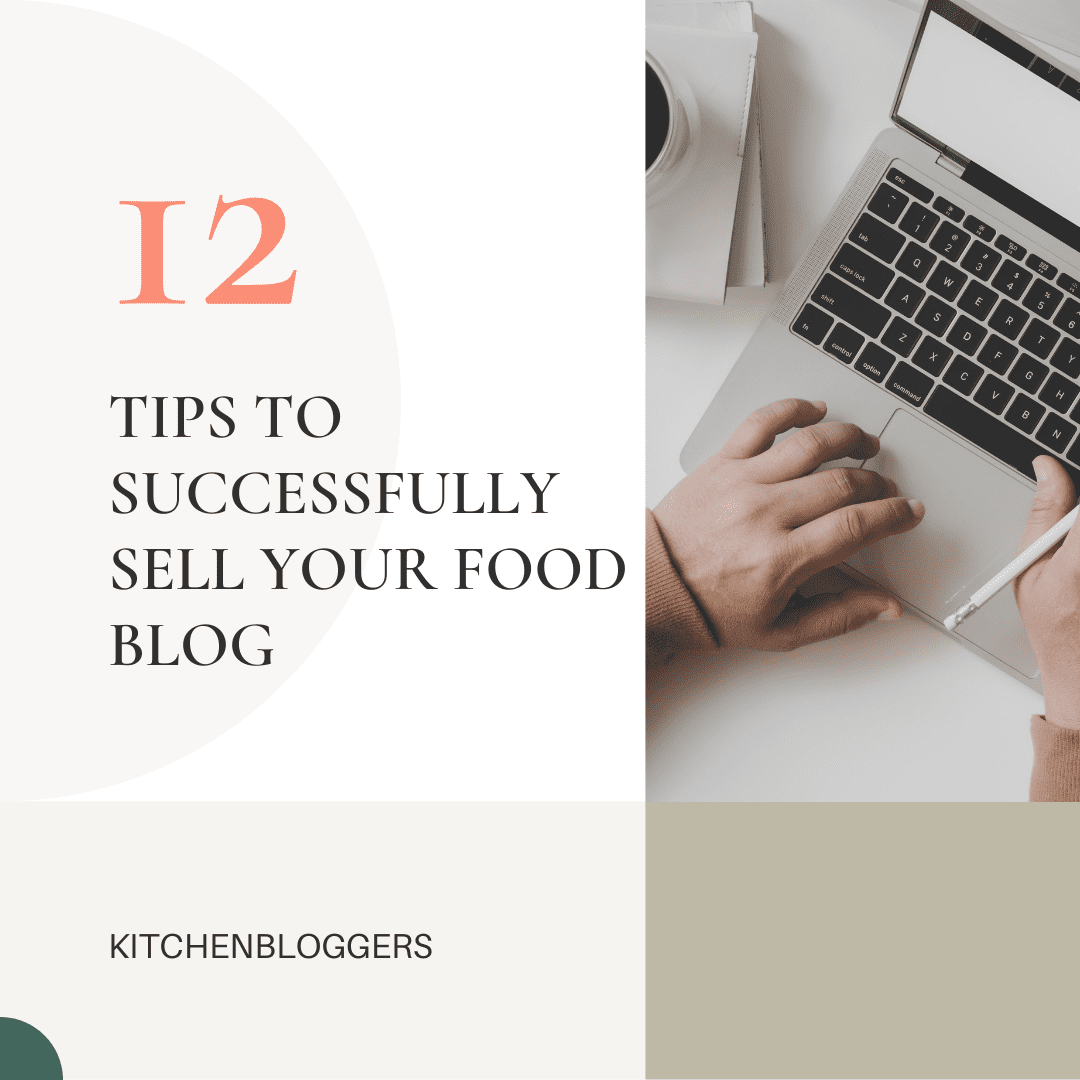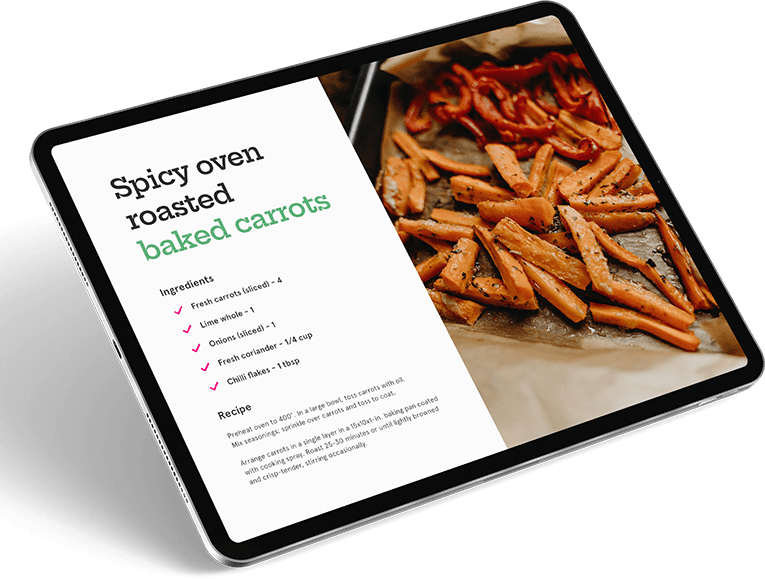Hey KitchenBloggers! Welcome to the second in our two-part series where we explore what it takes to create a successful food or lifestyle blog that will attract top dollar if you ever decide to sell. Even if selling your “baby” isn’t in your immediate plans – the tips offered in this series provide a lot of valuable insight into what it takes to develop a successful food-related online business.
I recently had a chance to sit down with Thomas Smale, founder of FE International M&A Advisory for Online Businesses, to learn more about what makes a food-related lifestyle website valuable to potential buyers. Having managed over 500 businesses and hundreds of millions in M&A (mergers & acquisitions) transactions, Thomas shares with us in this interview what metrics food-related website owners should aim to have their business meet before a sale.
Here is what he had to say…
Q1: What is an ideal amount of time to spend on a food blog per week?
TS: Crafting quality content is time-consuming, but being able to demonstrate limited owner involvement is one of the most important factors when it comes to valuing an online business. Most buyers are looking for passive income, so a business that requires 5-10 hours a week will be highly attractive, while one that requires more than 20 hours of owner involvement a week will typically fetch a lower multiple.
Q2: How old should the financial history of the business be?
TS: Ideally, a business should be at least one year old. Without a minimum of 12 months of financial data, it is virtually impossible to judge whether the business is subject to any seasonal spikes or dips. A business typically “matures” at three years old—that is, successful businesses with three years of sound (ideally upward-trending) data are likely to receive a higher multiple.
Also, it’s a good thing you brought up financial history. One of the most vital aspects of preparing any business for sale is ensuring there are concrete records not only of financial transactions—such as sales and expenses—but also where you get your traffic from, what keywords you rank for etc.
The best advice I can give any founder in the early stages of their business journey is to keep solid records from the beginning. It’s much easier to follow accounting best practices right from the start than it is to work backward. Besides, tracking financials and other metrics isn’t only about preparing a business for sale, it’s about measuring how your business is progressing and how you can improve it.
Without solid record-keeping, it’s hard to learn from past mistakes and optimize costs moving forward, which can ultimately result in having to close up shop.
Q3: What metrics most significantly impact the multiple?
TS: For food-related websites monetized through digital products, advertising and affiliates, traffic has a dramatic effect on valuation. We look at: What percentage of your traffic comes from search, and is therefore subject to changes in search engine algorithms? How secure are your search rankings? What is the trend in your industry? Where does your referral traffic come from? Is that traffic sustainable?
These are all factors we look at when coming to a valuation so it’s vital to have this information well-documented.
Other significant metrics include owner involvement, the number of channels through which your business is Monetized (more is typically better, with 2-4 being most common), and the level of competition in your specific niche, as well as financial performance overall.
Q4: What percent of your revenue should come from direct ads/passive channels?
TS: Direct ads can be a great source of revenue for food-related websites, but they also tend to require greater owner involvement to be sustainable. Buyers are unlikely to be interested in a business that is overly dependent on direct ad sales to be successful.
A good rule of thumb is direct ad sales should not comprise more than 25% of your revenue.
Q5: What role does FE International play in the sale of an affiliate business?
TS: As the industry’s preeminent M&A advisors with over 30 years of combined experience in selling online businesses, FE International has an expert team in place to help you achieve the highest valuation and sale price for your online business.
Before your business is even listed, we will use our experience to advise you on the steps you can take to improve your business and therefore increase its valuation. We will ensure that your financial records are buyer-ready; perform due diligence to assure any legal requirements are satisfied, and conduct negotiations with buyers on your behalf.
While online business brokers typically charge a listing fee, with the advisors at FE International you only pay a commission when your business sells. When the time is right to sell, we have over 30,000 fully-vetted buyers looking to buy the online business that’s right for them.
Q6: What are some ways to reduce owner involvement?
TS: Automation and outsourcing are two of the best ways to reduce owner involvement. Founders have a natural desire to do everything themselves—after all, who can do it better? As hard as it is to let go, this is a dangerous notion to cling to. Whether you’re selling your business or not, it pays to identify areas where you can limit your involvement. Here are some good places to start:
● Administrative tasks
● Content creation and management
● Customer service/online support
● Design
● Social media management
Q7: Is there a “right time” to sell your business?
TS: Though this isn’t necessarily when entrepreneurs want to part with their company, the best time to sell a business is when it’s growing. It’s much more difficult to get a buyer interested in a business with stagnant or declining revenue. Another important factor is owner enthusiasm. It’s best to sell when your engagement with the business is still high. Buyers can often sense when a founder has lost interest in their company, and that may scare them away.
Q8: How many different revenue streams should you have? What percentage of your revenue should come from a single source?
TS: In general, it is best to diversify to avoid changes in affiliate program structures, loss of revenue due to advertiser churn, or fluctuation in sales of any one product.
One example of the danger of having all of your eggs in one affiliate basket is when Amazon changed the structure and commission rates for their Associates program in March of 2017. Businesses dependent only on Amazon were much more adversely affected than businesses with a diversity of affiliate programs.
Program owners can change their terms at any time and with very little notice. Spreading your content across several affiliate programs is one way to mitigate this risk.
For product sales, it is best to not have any one product sold make up more than 5% of the businesses’ revenue, and regarding advertising channels, it’s best to have 3 or more channels contributing to advertising income to avoid risk.
As a general rule, it’s good to have as diverse a number of revenue sources as possible.
Please note: Context is imperative in FE’s ability to derive an exact valuation for each individual business as they consider each one holistically, so please keep in mind these are just broad rules of thumb. A business would not be immediately disqualified from being sold if it does not fit these exact parameters, and likewise merely meeting these parameters does not ensure a high valuation.
Q9: How has the number of affiliate businesses you’ve listed been trending?
TS: We’ve seen explosive growth in the number of affiliate businesses we’ve been working with. In 2015, affiliate businesses accounted for 15% of businesses sold. In 2017, that number nearly tripled to 41%.
Q10: What are some ways to increase the traffic to your site?
TS: When it comes to traffic it’s always good to keep in mind that there are two kinds: Paid and organic.
Organic traffic tends to be more valuable when it comes to conversions, and the best way to drive it is through creating and promoting quality content. If you have a successful affiliate site, this is more than likely the cornerstone of your business.
Paid search, such as through Google Adwords, can also yield impressive results. Consider using SEMrush to see what keywords are driving traffic to your competitors and tailor your pay-per-click (PPC) advertising strategy accordingly.
Q11: Are there certain aspects to watch for when choosing an affiliate program?
TS: There are obvious aspects to look out for when choosing the affiliate program best suited to your business. Commission rate and available products would be two of them. We wrote extensively on the pros and cons of two of the biggest affiliate programs—Amazon and Walmart—here, and while the details may differ, many of the factors can be applied when considering other affiliate programs, as well.
KB Note: One thing I talk about a lot on KitchenBloggers and in our private Facebook group, is the value of creating and offering your own unique digital products (cookbooks, menu plans, etc…) on your site. Following the interview above – I asked for some additional feedback regarding how the inclusion of digital products may affect the valuation of your site. Here is Thomas’ response:
Q12: What role do unique digital products play in the valuation of a food-related lifestyle website?
TS: Selling unique products is always helpful in improving the valuation, particularly if you have the ability to sell directly to clients and/or can prove that buyers are coming back to buy again or buy similar products. It is certainly important for courses to be evergreen and to be built around a brand, rather than a person. That helps make the business transferable to a buyer without relying on the current owner. The evergreen factor is something we take into account in the valuation of each business.
*****************
Have questions? Whether it is about selling or buying an online business or just a general question, feel free to contact FE International here. (aff. link)
****************
In case you missed the first part of this two-part series – you can check out Part 1 here.
Want more tips on how to grow your food-related blog? Check out the KitchenBloggers’ private (but FREE) Facebook group to connect and network with more than 1,200 (and growing daily) food, health, & lifestyle bloggers!


